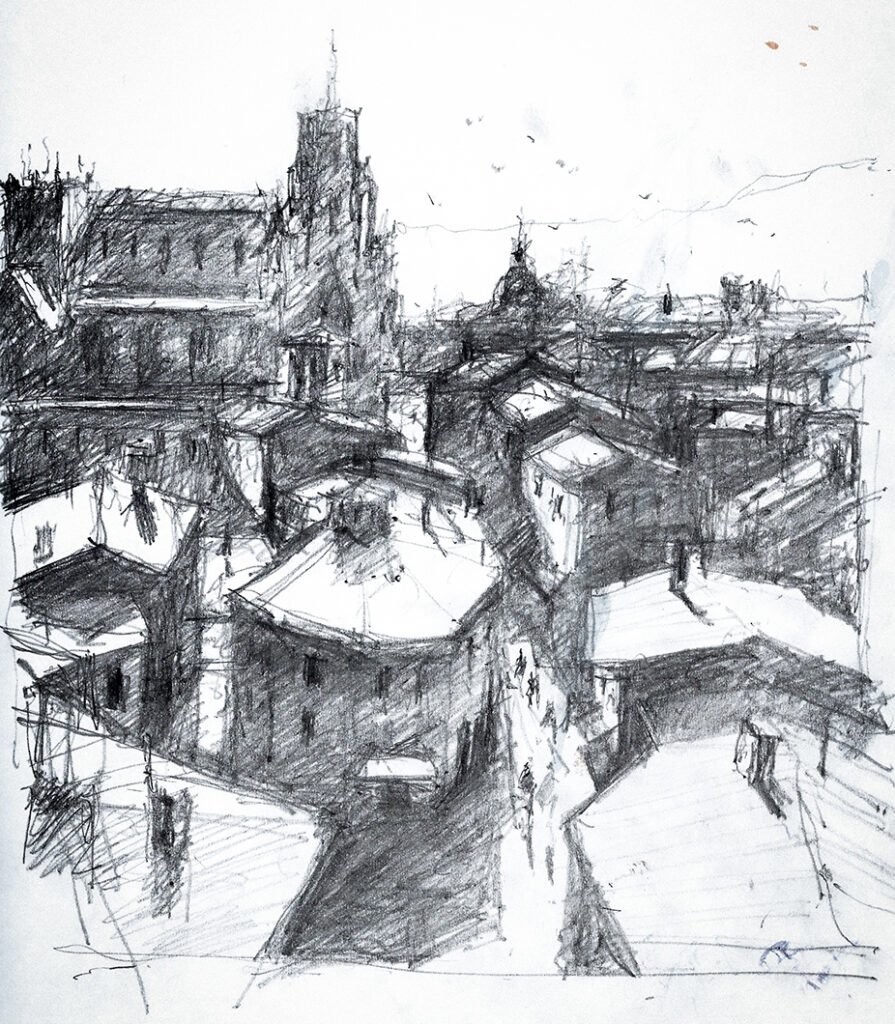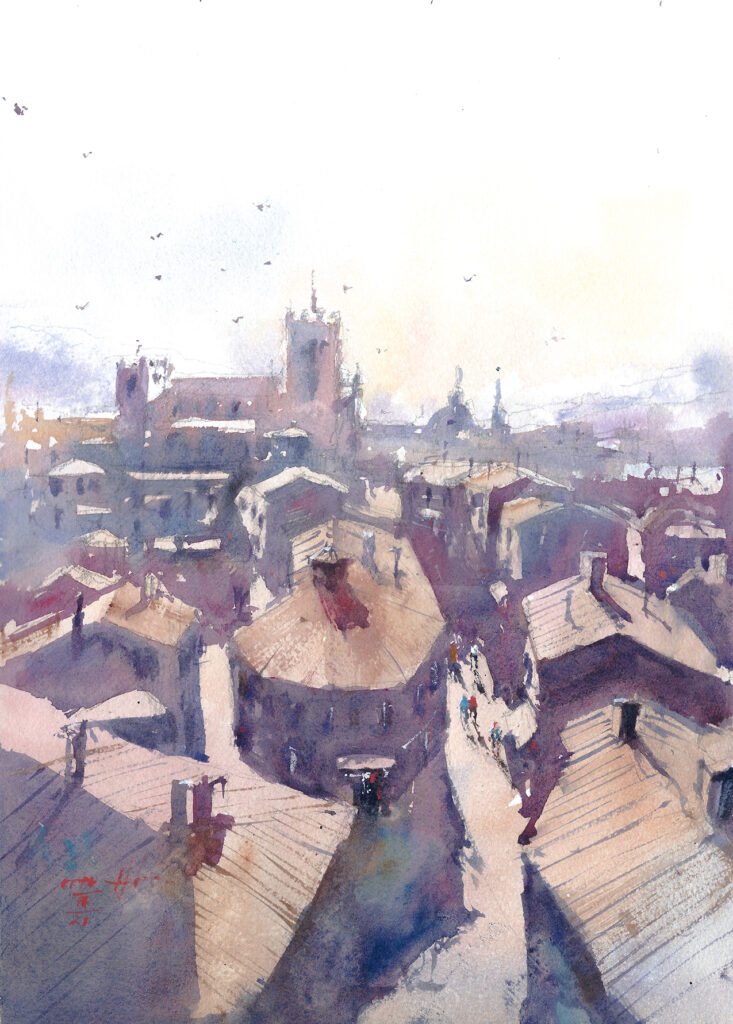In the previous blog post, I wrote about the importance of of graphite sketching in my watercolor painting process. Many people undervalue the usefulness of utilizing graphite sketching as an integral part of developing your painting ideas. I was able to gradually improve my painting over years of experience practicing monochrome sketching. Since I began my career in watercolor painting, I have always used graphite sketching as a gateway to develop my painting ideas. Not only the opportunity to constantly practice my foundation on drawing, the graphite sketch also helps me in various aspects; the graphite sketch method reveals compositional ideas, lighting, and tonal values, and all of these elements will eventually be essential parts of good paintings. Over time, the collection of my sketches as part of working process become pieces of art in themselves. Please visit Sketching Light page on my website to see a full collection my sketches.
In addition to the opportunity to regularly practice sketching, the usefulness of graphite sketching helps me develop tonal value ideas in my work. Tonal value is one of the most important elements in creating depth, shapes and volume in painting. Besides perspective, tonal values create illusion of three dimensions on a two-dimensional surface.
Recognizing and translating TONAL VALUES is the most important key to producing outstanding works of art.
Robert wade
The ability to correctly utilize and create good tonal values will improve the outcome of a painting. Without tonal values, drawings and paintings will look flat and contain no depth. The opportunity to improve tonal values skill can begin with the practice of graphite sketching.
When initiating my painting ideas with a graphite sketch, I normally apply three tonal values to my sketch: light tones, middle tones, and dark tones. If you place light against dark tone or vice versa, the shape will emerge. One technique that I always use when working on tonal values in my sketch is by squinting my eyes. By doing so, it helps reveal simple shapes through light, middle, and dark tones in my drawing by eliminating detail. Utilizing this technique, tonal values is much easier to recognize.

The graphite sketch above is part of my working process of developing tonal values for my painting. For this image, you can see that I placed darker tones around the light tones to help define the roof shapes. Additionally the form of the church in the background is revealed by using the contrast between the light tone of the sky and the middle tone of the building. You also see that I amplified the depth in my drawing by implementing the darkest tone in the area that is further away from light. The strong contrast between light and dark tone is intensified in the focal point of my composition as well. The contrast between light and dark tones also helps differentiate between focus and peripheral vision in the painting. To further generate depth, I implemented darker tones in the foreground, middle tones for the middle ground, and finally lighter tones for the background. To see more examples and to further understand how I implement tonal values, please visit my sketching collection on my website. I really can’t stress enough how important and useful it is to understand and using graphite sketch alongside with formal painting.
The image below is the final painting that was initiated through a graphite sketch.

It is imperative to be able to recognize and utilize tonal values in painting correctly. Graphite sketch is a good start, and it’s good way to improve your ability of seeing in terms of tonal values.